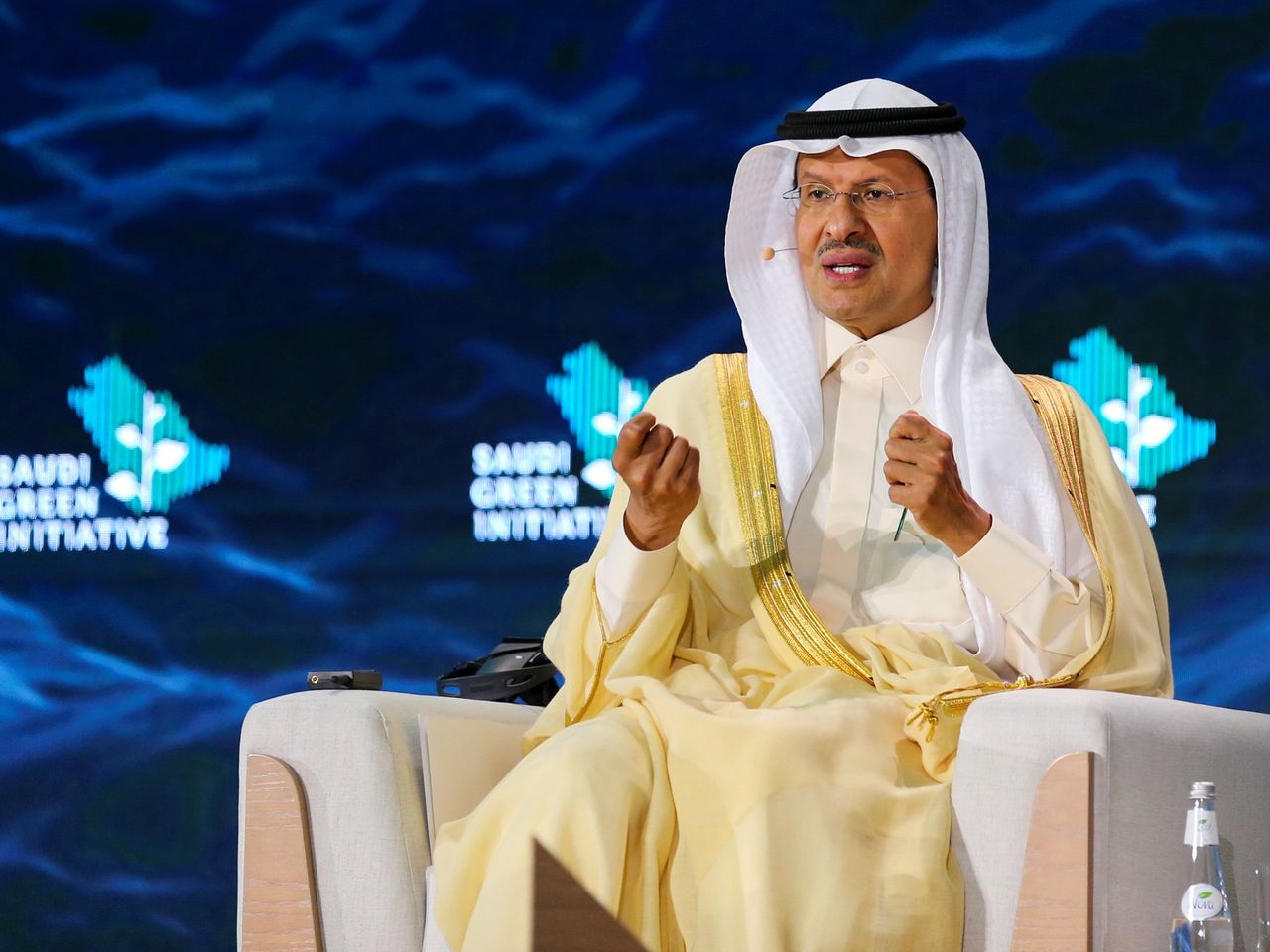Top crude exporter Saudi Arabia will aim to achieve net zero carbon emissions by 2060, its de facto ruler said on Saturday, days before the COP26 global climate summit.
The kingdom, one of the world’s biggest polluters, said it would also join a global effort to cut methane emissions by 30 percent by 2030.
The UN says more than 130 countries have set or are considering a target of reducing greenhouse gas emissions to net zero by 2050, an objective it says is “imperative” to safeguard a liveable climate.
“I announce today Saudi Arabia’s target to reach net zero emissions by 2060,” Crown Prince Mohammed bin Salman told the “Saudi Green Initiative” forum.
“I am pleased to launch initiatives in the energy sector that will reduce carbon emissions by 278 million tonnes annually by 2030, thus voluntarily more than doubling the target announced,” Prince Mohammed said.
“We also announce the kingdom’s accession to the Global Methane Pledge.”
A statement said Saudi Arabia would “contribute to cutting global methane emissions by 30 percent by 2030, as part of its commitment to deliver a cleaner, greener future”.
The 2060 target would “enable us to have a smooth and viable transition, without risking economic or social impacts”, Energy Minister Prince Abdulaziz bin Salman said.
COP26 President Alok Sharma welcomed the announcement.
“I hope this landmark announcement… will galvanise ambition from others ahead of #COP26,” Sharma tweeted, adding he was looking forward to seeing more details on the Saudi plan.
Aramco 2050 target
Shortly after, energy giant Saudi Aramco said it committed to being a net zero enterprise by 2050.
“Saudi Aramco will achieve an ambition of being also a net zero from our operation by 2050,” Aramco chief executive Amin Nasser said at the forum.
“We understand that the road will be complex, the transition will have its challenges, but we are confident we can meet them and accelerate our efforts to a low emission future.”
Saudi Arabia is estimated to emit about 600 million tonnes of carbon dioxide per year — more than France and slightly less than Germany.
The year 2050 has become a focus for carbon neutrality, defined as achieving a balance between emitting carbon and absorbing carbon from the atmosphere.
As COP26 approaches, a string of countries have pledged to aim for net zero emissions by 2050, and global airlines and banks are also targeting the mid-century goal.
UN chief Antonio Guterres said Friday the current climate situation was “a one-way ticket for disaster”, stressing the need to “avoid a failure” at COP26 in Glasgow.
Held between October 31 and November 12, the gathering is seen as a crucial step in setting worldwide emission targets to slow global warming.
Tree-planting drive
In March, Saudi Arabia unveiled a campaign to tackle climate change and reduce carbon emissions, including a plan to plant billions of trees in the coming decades.
The OPEC kingpin aims to reduce emissions by generating half of its energy from renewables by 2030, Prince Mohammed said at the time.
The prince announced on Saturday that the first phase would include planting more than 450 million trees and the rehabilitation of eight million hectares (nearly 20 million acres) of degraded land.
Saudi Arabia also said it would designate new “protected areas”.
The move brings “the total protected areas in the kingdom to more than 30 percent of its total area”, Prince Mohammed said, adding the first set of green initiatives would cost more than 700 billion riyals ($186.6 billion).
Princess Reema bint Bandar al-Saud, Saudi Arabia’s ambassador to the United States, said the land conservation move was critical.
“We want to diversify our economy. Hospitality and tourism are key to that, but so is preserving our environment,” she said at the forum.
Saudi Arabia currently draws on oil and natural gas to both meet its own fast-growing power demand and desalinate its water — which consumes huge quantities of oil.
The initiatives come as energy giant Saudi Aramco, the kingdom’s cash cow, faces scrutiny from investors over its emissions.
In January, Bloomberg News reported that Aramco excluded emissions generated from many of its refineries and petrochemical plants in its overall carbon disclosures to investors.
It added that if those facilities are included, the company’s self-reported carbon footprint could nearly double, adding as much as 55 million tonnes of carbon dioxide equivalent to its annual tally –- roughly the emissions produced by Portugal.
